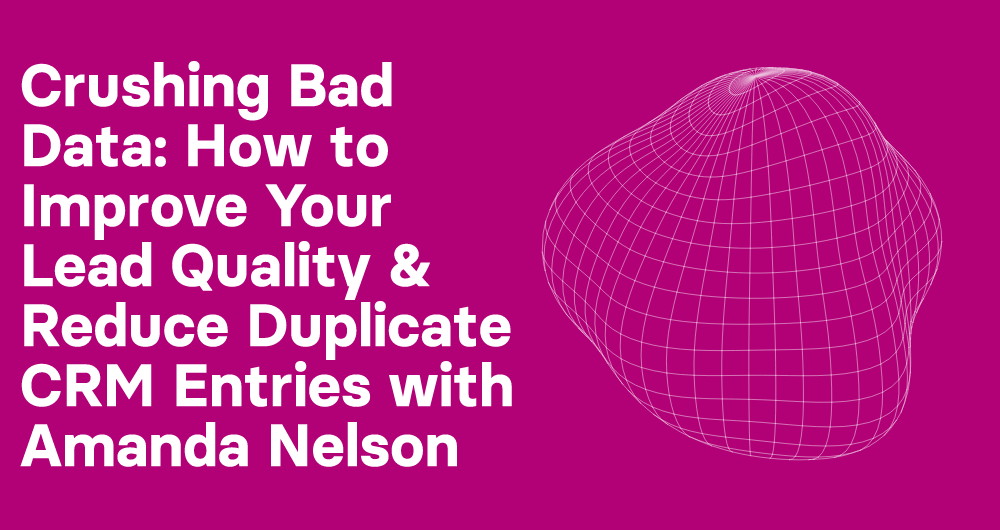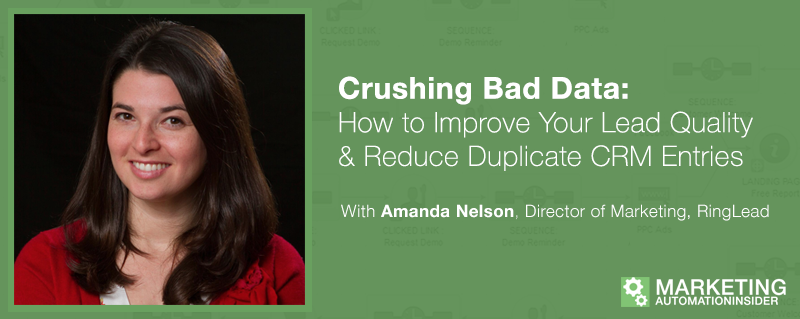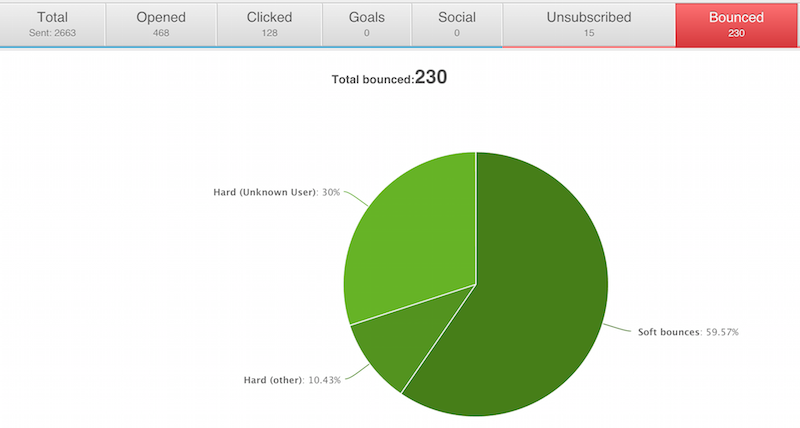Crushing Bad Data: How to Improve Your Lead Quality & Reduce Duplicate CRM Entries with Amanda Nelson
Marketing Automation Insider is supported by readers like yourself. We may earn an affiliate commission when you purchase through our links. Of course, this won't increase the cost of your subscription.

Data cleansing may not be the sexiest of topics when it comes to optimising your marketing automation and CRM, but as we shall see, it’s an important one.
In today’s article, we interview data quality expert Amanda Nelson, Director of Marketing at Ringlead, on the best tactics and strategies for improving CRM data quality.

Q: From your perspective, why should businesses care about data cleansing? What are tangible benefits that come as a result of cleaner data?
Amanda: There’s an old saying about data and data quality: Garbage in and garbage out. It still holds true, as long as there have been databases. Data quality is essential. Nothing can undermine or torpedo user adoption of you database, CRM, or marketing automation platform, than having bad data.
Dirty data has a way of silently infiltrating your organization, creating frustration, inefficiency, and dismal user adoption in the systems themselves. It can affect each department and group of stakeholders in a very different way.
From a marketing perspective, your reports, automated processes, workflows, and drip nurture campaigns are skewed. Bad data affects morale, because it is frustrating and inefficient for many departments. There are literally over 100 negative impacts of bad data, and we even covered that in this post.
Worst of all, bad data costs you money. It could be upwards of $100 per duplicate record, for example, which is quite serious. Many marketing automation platforms charge based on number of records so you’re paying for the same data multiple times.
Clean data enables you to run your business effectively, but it can also earn you money. We found that an organization with clean data can generate up to 70% more revenue than an organization with bad data. If the average SMB has $35 million in revenue (according to the SBA 2013 Census), that’s an additional $24.5 million dollars in revenue from clean data.
Q: Over the years, it’s natural to see a degree of lead deterioration from people moving jobs, re-allocating budgets etc. Are there any effective ways to reduce this sort of gradual lead deterioration?
Amanda: You’re absolutely correct about this issue. Eight million people change jobs each year. 75 phone numbers change every 30 minutes. All of this results in incorrect contact information in your database. Your data is decaying as you read this interview.

Without a data protection strategy, your data will continually decay. Not only do phone numbers, emails and titles change, but as your employees are entering data into your CRM, they are creating duplicates and entering data inconsistently.
It’s important to routinely check your data validity by setting validation rules, as well as establishing constraints and routines from the start. This makes sure there is correct and meaningful data in your system.
There are many great tools and products that can quickly identify a company’s web footprint, searching company web pages, news articles, directories, SEC filings, social networks, and more, to locate fresh and relevant contact data. These tools identify key personnel and their job titles, phone numbers, email addresses, social media accounts and much more.
Q: Having clean CRM data has always been important, but would you say it’s more important now that companies and their marketers are integrating marketing automation with their CRM systems? If so, why?
Amanda: We recently conducted a survey on the state of data quality, and we learned that the majority of the respondents were marketers, and they considered themselves the data stewards, or the owners of data, at their organization. As marketers become more entrenched with technology, and truly own it in their organization, they must understand data quality.
Data comes into your organization in many different ways, but the top ways are via a web form, manual entry and list uploads. Marketers can play a role in all of these methods, especially web forms. Marketers get excited when a lead comes in from a website, but not if they’re already in your CRM. Duplicate records from web forms are extremely common — up to 80% of web form submissions may be duplicates. They have to be handled elegantly to ensure they remain unique records without any information loss.
Helpful technology can integrate with your existing marketing automation and CRM platforms, processing all web form submissions, and checking for existing Leads, Contacts and Accounts.
Most marketing automation systems prevent duplicates based on email address only, and that can miss up to 60% of your duplicates. That’s a big reason why that 80% number is so high.
Q: What are your top preventative tips for eliminating duplicate entries and bad data before it becomes a problem?
Amanda: The answer is to never allow bad data into your CRM system in the first place. To do this, there are three core steps to follow when it comes to data quality.
1. Clean your data: Without performing a comprehensive data cleanse, you’re off to a poor start. For example, if a record is imported from a trade show list, it is created manually via a sales user, and created again via a web form submission. Now this user exists in the CRM three times. Cleaning your data ensures a standardized approach to your data entry process. It supports unique, duplicate-free records.
2. Protect your data: Once you clean your CRM data, you have to keep it clean. As we discussed earlier, contact data changes as people change jobs, are hired, fired or promoted. Wrong phone numbers, email addresses and job titles can linger in a database if left unchecked. Protecting your data is about considering your methods of input. For instance, there are a variety of ways for employees to type in job titles, which makes precise database segmentation impossible. For example, there are many ways to write “Director of Marketing” including “Dir. of Marketing”, “Marketing Director”, etc. A CRM does not see this as the same title, in fact, it sees it as three different titles, making it impossible to accurately report, segment data, etc. This goes beyond titles to states (NY vs N.Y. vs New York), countries (United States, USA, U.S.), and more.
Creating a CRM Data Plan (we have an ebook on it here) will help establish data standardization to protect it from duplicates and inconsistent entry.
3. Enhance your data: Without enhancing your existing data, you limit your data potential. Additional information on the record will help to complete the contact’s information, giving you a 360-degree view of the contact. It ensures the data is accurate by verifying the email addresses and saving your salespeople time from sending bad emails. When sales teams, customer success teams and other employees do not have access to a complete record, they waste time looking for that contact information. Over 30% of an employee’s time is wasted on contact research.
You can learn more about Amanda on the Ringlead website here, or follow her on Twitter here.



